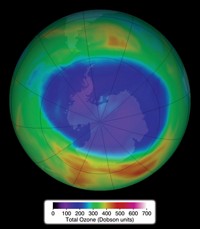Advertisement
Grab your lab coat. Let's get started
Welcome!
Welcome!
Create an account below to get 6 C&EN articles per month, receive newsletters and more - all free.
It seems this is your first time logging in online. Please enter the following information to continue.
As an ACS member you automatically get access to this site. All we need is few more details to create your reading experience.
Not you? Sign in with a different account.
Not you? Sign in with a different account.
ERROR 1
ERROR 1
ERROR 2
ERROR 2
ERROR 2
ERROR 2
ERROR 2
Password and Confirm password must match.
If you have an ACS member number, please enter it here so we can link this account to your membership. (optional)
ERROR 2
ACS values your privacy. By submitting your information, you are gaining access to C&EN and subscribing to our weekly newsletter. We use the information you provide to make your reading experience better, and we will never sell your data to third party members.
Environment
Storms Linked To Ozone Damage
Atmosphere: Scientists suggest climate change could induce storms that hasten ozone loss
by Elizabeth K. Wilson
July 30, 2012
| A version of this story appeared in
Volume 90, Issue 31

Great plumes of water vapor injected into the stratosphere by powerful summer storms could be affecting atmospheric chemistry, triggering previously unrecognized damage to Earth’s protective ozone layer, scientists report (Science, DOI: 10.1126/science.1222978).
If such storms become more intense and frequent, as predicted by climate-change models, loss of stratospheric ozone would increase, exacerbating the already present dangers of exposure to UV radiation, conclude the paper’s authors, chemistry professor James G. Anderson and colleagues at Harvard University.
The researchers begin their chain of evidence with atmospheric data from a series of NASA aircraft missions over the U.S., taken during several summers over the past 10 years. The data show that convective storms frequently push large concentrations of water vapor into the stratosphere.
Extra humidity drastically alters the free-radical chemistry of bromine and chlorine, the primary destroyers of stratospheric ozone.
In particular, water vapor swells the liquid sulfate/water aerosols in the atmosphere that are the substrates of much stratospheric chemistry. The solubility of hydrochloric acid in the aerosols then increases. This condition makes it easier for chlorine to be transformed, through a chain of reactions involving chlorine nitrate, into the ozone-destroying, catalytically active free radical ClO∙. The researchers calculate that the extra humidity could result in ozone destruction rates two orders of magnitude greater than those in less humid conditions.
Paul O. Wennberg, a professor of atmospheric chemistry at Caltech, won’t speak directly to the coupling of climate change to ozone loss, but he says, “The tie between relative humidity and enhanced chlorine is secure.”
Ross J. Salawitch, a chemistry professor at the University of Maryland, agrees with the researchers’ observation that no aircraft missions currently study free radicals such as BrO∙ or ClO∙ in regions where storms have injected water over the U.S. Such measurements are needed to strengthen possible links between climate change and stratospheric ozone, he says.




Join the conversation
Contact the reporter
Submit a Letter to the Editor for publication
Engage with us on Twitter